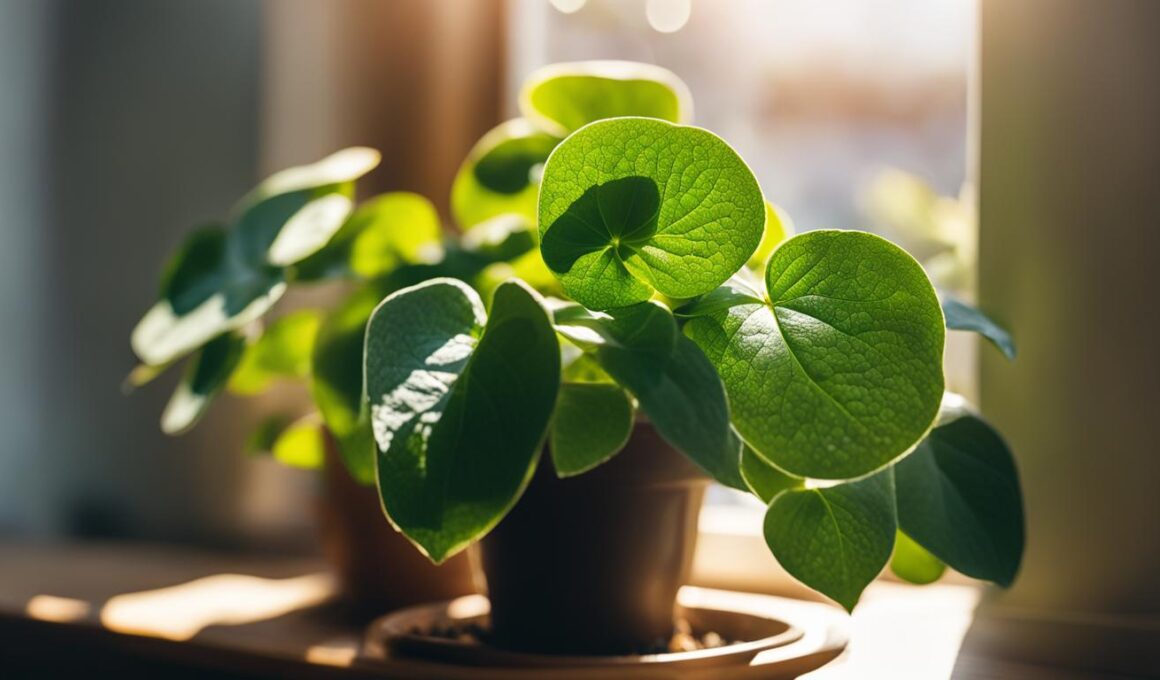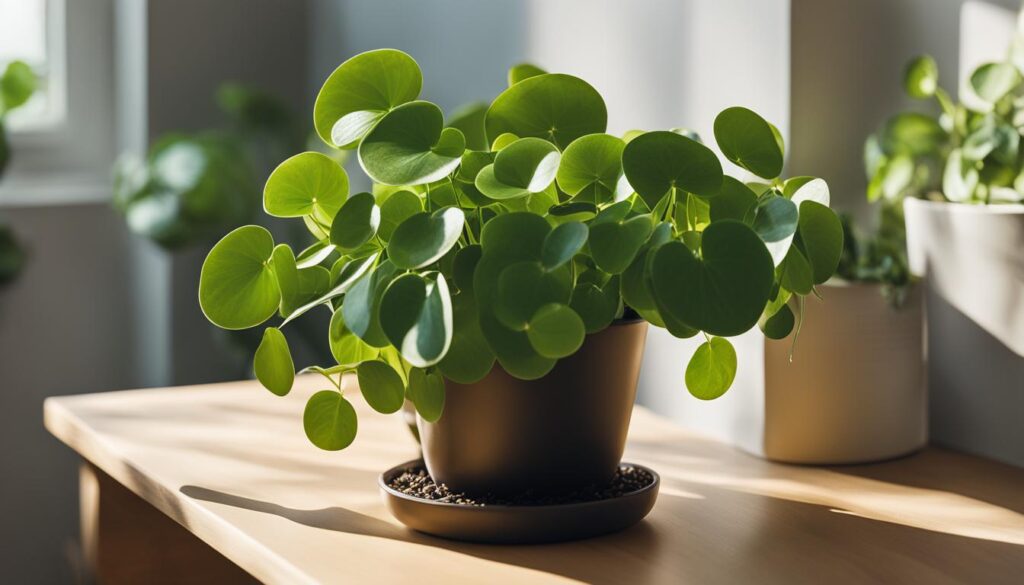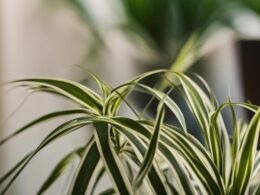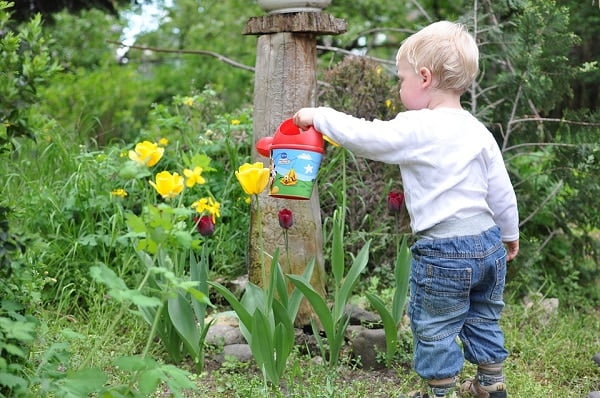Being a plant parent, particularly to the charming Pilea peperomioides, involves understanding the essential elements vital for your houseplant’s growth. One of the most important factors contributing to the well-being of your Pilea is light. Since light is necessary for vital aspects such as photosynthesis in plants, providing your Pilea with the proper light exposure is crucial for its growth and overall success.
Although other plant care aspects like soil and watering can be easily managed, adjusting indoor light conditions poses a unique challenge, as it depends on your home’s architecture. Nevertheless, being informed about your Pilea’s light requirements, such as bright indirect light, allows you to create the most favorable environment for it to thrive.
In this article, we will explore the significance of light in Pilea care, how to determine the perfect lighting conditions, and best practices for adjusting your home environment in order to meet your Pilea’s light needs.
Key Takeaways
- Light is vital for Pilea growth and photosynthesis in plants
- Bright indirect light is the optimal lighting condition for Pilea peperomioides
- Adjusting light exposure in indoor environments can be challenging
- Understanding your home’s light conditions helps in providing proper Pilea care
- Utilizing grow lights and regular plant rotation enhances Pilea’s growth
The Importance of Light for Pilea Plants
Light is a crucial element in the life cycle and energy acquisition for houseplants, including Pilea peperomioides. It not only supports their survival but also provides the necessary conditions for photosynthesis, ultimately propelling their growth. As a plant owner, it’s essential to recognize that natural light in your space may not be entirely under your control. By identifying the ways you can create an ideal light environment for your Pilea, you can ensure its continued prosperity.
Understanding what constitutes sufficient light for plants is key to providing optimal conditions to promote healthy growth. The essential factors to consider when evaluating your houseplant’s light requirements are:
- Intensity: The brightness or strength of illumination from the light source.
- Duration: The amount of time your plant receives light each day.
- Quality: The type of light, determined by its spectral composition, which impacts how plants process it for growth and energy.
Deciphering Light Intensity
Light intensity, the primary factor of Pilea growth conditions, can be quantified through foot-candles measurement (FC) using a light meter. By monitoring your home’s light patterns at various times of the day and across seasons, you can optimize your Pilea’s exposure to light.
The Direction of Light: Indirect vs Direct Exposure
Pileas need bright indirect sunlight for plants rather than direct sunlight, which can lead to leaf burn. To ensure ideal Pilea peperomioides exposure, position your plant away from direct light and in front of west or east-facing windows. This helps avoid the negative direct light effects, such as traditional sunburn signs on leaves.
Evaluating Light in Your Space: Techniques and Tools
Measuring home light for plants involves various readily accessible techniques and tools. One simple light evaluation tip is to perform a shadow test for sunlight. This involves observing the clarity and definition of a shadow cast on a surface, which can inform you of the light quality your Pilea is receiving.
A more precise method involves using the following tools:
- Light meters
- Sensor-based smartphone apps
- Photography light meter apps
These tools deliver a comprehensive measurement of your room’s lighting environment, which can aid in Pilea placement.
Here’s a rule of thumb for understanding the desired FC levels:
| Light Intensity Level | Foot-candles |
|---|---|
| Low | 50-250 FC |
| Moderate | 250-1000 FC |
| High | 1000+ FC |
It’s important to remember that Pilea plants flourish in conditions with moderate to bright indirect light. By understanding your home’s lighting conditions and adjusting your Pilea’s location accordingly, you can create an environment that fosters healthy growth.
Consequences of Excessive Light on Pilea Health
Overexposure to sunlight can have detrimental effects on the health of your Pilea plant. One of the most apparent signs of excessive light exposure is leaf sunburn in Pilea, characterized by brittle leaves showcasing dark patches. These darkened areas are a result of excessive heat energy caused by too much light. It is essential to recognize the signs of excessive light exposure and take the necessary steps to rectify it and prevent further damage.
Moving the Pilea plant to a more suitable location in your home can help mitigate the effects of too much light and avoid additional damage. However, it is crucial to understand that leaves already affected by sunburn cannot be saved. Over time, the plant may shed these damaged leaves as part of its natural healing process.
- Monitor your Pilea plant’s location and light exposure closely to ensure optimal growth conditions
- Look for signs of overexposure, such as dark patches on the leaves, indicating leaf sunburn in Pilea
- If symptoms of excessive light are apparent, move the plant to a location with more suitable bright, indirect lighting conditions
When it comes to caring for your Pilea plant, prevention is vital. Establishing an environment that provides your Pilea with ideal lighting conditions from the outset can prevent excessive light exposure and related issues such as leaf sunburn in Pilea. By doing so, you will promote healthy, vigorous growth for a thriving, beautiful indoor plant.
Signs Your Pilea Needs More Light
Knowing when to make adjustments to your Pilea’s light exposure is essential to maintain its health and growth. Here are some key light starvation indicators that suggest your Pilea may be suffering from light deficiency.
- Etiolation in Plants: Observe your Pilea for elongated stems and increased spacing between leaves, which may suggest it is aggressively reaching for more light. This phenomenon is known as etiolation and can lead to a weak and spindly plant.
- Yellowing Leaves: Insufficient light for proper photosynthesis can cause leaves to turn yellow, signaling a need for more light. Lack of adequate light can disrupt the plant’s natural processes and result in suboptimal growth.
- Stunted or Slow Growth: During warmer months, when the Pilea should naturally exhibit significant growth, a slow or stunted growth rate can indicate a shortage of light. Monitor the growth progress closely to identify if the cause may be related to light deficiency.
With proper attention to these indicators, you can make timely adjustments and ensure your Pilea receives the optimal amount of light for its health and growth. Remember, establishing the perfect light environment ultimately promotes the well-being of your beloved Pilea plant.
Enhancing the Light Environment for Optimal Pilea Growth
In order to achieve the best possible growth for your Pilea, it is crucial to establish a suitable light environment. This can be accomplished through a combination of supplemental lighting, maintaining cleanliness in your space, and plant rotation to distribute sunlight evenly.
Utilizing Grow Lights for Consistent Illumination
Supplemental lighting for plants such as grow lights can provide Pileas with the necessary illumination for consistent growth, especially in darker seasons or spaces. When using grow lights for Pilea, it is essential to balance artificial light exposure, ensuring that plants have periods of rest while also receiving adequate light throughout the day.
- Select LED grow lights for energy efficiency and producing a full spectrum of light that mimics natural sunlight.
- Position grow lights 12-18 inches above your Pilea to optimize light penetration without causing leaf burn.
- Utilize a timer to turn grow lights on and off, adhering to the recommended 12-14 hours of light per day for optimal growth.
Maintaining Pristine Windows and Foliage for Maximum Light Penetration
To maximize sunlight indoors and ensure maximum light absorption by your Pilea, it is important to keep both windows and plant leaves clean. Clean windows for light penetration by removing dust and grime; this allows unobstructed sunlight to enter your space. Likewise, ensure dust-free leaves for your Pilea by gently wiping each leaf from top to bottom using a soft damp cloth.
The Role of Plant Rotation in Even Light Distribution
One of the essential indoor gardening solutions for promoting symmetrical Pilea growth is the practice of plant rotation. Regularly rotating your Pilea ensures that all sides of the plant receive equal light, preventing any one side from growing disproportionately towards the light source. Here is a simple three-step rotation method:
- Observe your Pilea’s growth pattern and identify the side that is receiving less light.
- Rotate the plant by a quarter turn every week to enable even sunlight distribution to all parts of the Pilea.
- Monitor the Pilea’s growth and adjust the rotation frequency as needed to maintain a balanced plant shape.
With these indoor gardening techniques, you can better enhance the light environment for your Pilea, leading to healthier and more robust plants.
How Important Is Proper Watering for Pilea Plants’ Light Requirements?
Proper watering is one of the secrets of Pilea plant care. Maintaining the right moisture level is crucial for meeting their light requirements. Overwatering can lead to root rot, while underwatering can lead to wilting. Finding the perfect balance is the key to keeping your Pilea plants healthy and thriving.
Conclusion
Providing the best light conditions for Pilea growth involves understanding and managing light intensity, direction, and evaluating your space’s natural resources. By recognizing your Pilea’s light requirements and adjusting its environment to suit its needs, you can promote a healthier and more vigorous houseplant.
Focusing on key plant care tips, such as utilizing grow lights, maintaining a clean plant environment, and adhering to rotation practices, your Pilea can continue to prosper throughout varying seasons. The use of grow lights can be particularly helpful in supplementing natural light, ensuring consistent growth throughout darker months.
Achieving successful indoor gardening with Pilea plants ultimately requires patience and attentiveness to the plant’s light needs. By closely observing your plant’s response to its environment and making any necessary adjustments, you can nurture your Pilea towards optimal growth and health in an indoor setting.










